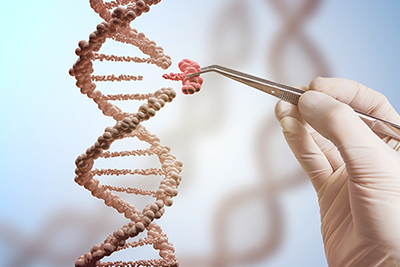The field of gene therapy is exploding. According to the Alliance For Regenerative Medicine, as of August 2023, the sector encompasses 2,760 drug developers globally, including 1,235 developers in North America. 1
This growing market presents a multitude of challenges for sponsors, CROs, institutions and their sites that they must consider when running these trials. To meet these challenges, all stakeholders need to understand the important roles of not only the IRB, but also the IBC—Institutional Biosafety Committee—in facilitating a safe and effective study.
In recent discussions with our industry partners, WCG experts identified key points to consider. Below are some of the takeaways.
Takeaway 1: Human Gene Transfer (HGT) Research Typically Requires IBC Oversight
HGT research is one in which recombinant or synthetic DNA or RNA is introduced into a human research participant. This includes gene therapy as well as a sizable portion of product development in the areas of gene editing, regenerative medicine, engineered stem cells and vaccines (including DNA, RNA, and vectored vaccines).
IBC approval is required when two criteria are met:
- The research is HGT research as defined in the NIH Guidelines Section III-C, and;
- The research is subject to NIH Guidelines due to relevant funding as defined in Section I-C.
Even in situations when both criteria are not met, NIH Guidelines recommend voluntary compliance for any type of human gene transfer. So do we.
When sponsors, CROs, institutions and sites begin working with an IBC, they can expect the role of the IBC to be:
- Provide review and approval of research protocols, facilities, and biocontainment levels.
- Advise the institution on policies.
- Asses the investigator/staff training and qualifications.
- Comprised of a committee that includes experts on relevant topics, representatives of the institution and members of the community unaffiliated with the institution.
- One that deliberates and votes on research proposals at convened meetings (in person or virtual).
After the IBC approves the trial, they will continue to provide oversight for as long as dosing occurs.
Takeaway 2: IRBs and IBCs Have Distinct Roles but Frequently Work Collaboratively
The requirement for IBC review is separate from—and in addition to—the requirement for IRB review. IBCs and IRBs are mandated by separate governing rules and have distinct roles and responsibilities. Here are three examples:
- Areas of focus: IRBs protect the rights and welfare of research subjects. IBCs protect the clinical and laboratory staff, the community and the environment from risks associated with genetically modified DNA and RNA.
- Jurisdiction: One IRB can oversee multiple sites. Each IBC registration applies to a specific research institution. That means a 20-site gene therapy trial (with relevant NIH funding) may require 20 unique IBC registrations. However, the administration of all those IBCs can be centralized.
- Length of involvement. Once all product is administered or removed from the site, the sponsor can close out the IBC. Obviously, such is not the case with IRBs, which are responsible for participant safety and follow-up.
Ideally, the IRB and IBC will work together. We see this often: they coordinate their reviews and attend each other’s meetings. Especially when centrally administered, the combined expertise of IRB and IBC memberships can provide enhanced efficiency for simultaneous or parallel review and approval.
Takeaway 3: No Matter Your Role in the Trial, Know What to Expect from Your Research Partners and the IBC
Keep in mind that the site team, investigators, and the CRO each have different responsibilities and various levels of knowledge. As a sponsor, you need to be able to educate them—and your colleagues—about IBC expectations in advance. This way, you avoid last-minute questions and pave the way for dealing with the complex issues involved in site activation and initiation.
As already mentioned, the IBC is charged with evaluating the biosafety risks to the public and the environment. Among the things they’ll want to know:
- The source(s) of DNA
- The host(s) and vector(s) to be used
- Whether an attempt will be made to obtain expression of a foreign gene, and if so, they will want to know the protein that will be produced
- The containment conditions:
- How is the investigational product transported, stored, prepared, administered, and disposed of?
- What is the risk of shedding, release and loss of containment?
- What spill response and emergency response plans are in place?
While ultimately it is the sponsor’s responsibility to adhere to the NIH Guidelines, it is critical to keep an open line of communication between all stakeholders. This partnership between all parties will ensure you set your study up right from the outset.
Takeaway 4: Seek Expert Guidance
As the gene therapy market expands, we see increased pressure to efficiently expedite trials to FDA approval while, at the same time, upholding safety and complying with NIH and FDA guidelines. HGT trials also face heightened regulatory scrutiny even as regulations are evolving
Planning for IBC oversight is crucial. Sponsors and CROs should seek expert advice at an early stage of clinical trial planning, particularly at the study kickoff meetings. You need biosafety expertise during the development of your Investigators Brochure, the Pharmacy Manual, as well during the site selection and protocol preparation stages.
We Can Help
WCG IBC Services has reviewed more HGT clinical protocols than any other organization. We provide the experience, personalized service, and streamlined process you need for safe and compliant oversight of gene transfer research. By coordinating the IRB and IBC review of gene transfer studies, we eliminate the duplicative reviews, creating a more efficient process.
References
- Alliance for Regenerative Medicine, Sector Snapshot, August 2023.
